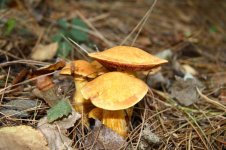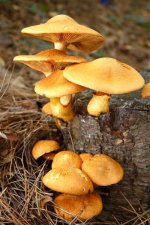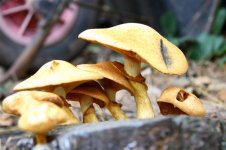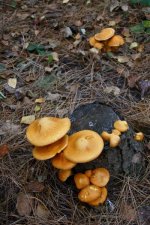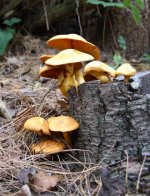oldgiteggy
A Valley Birder
Found this growing from an old scotts pine stump, in mixed woodland, next to our garden. The biggest is 10cm tall and 10cm round, it has a bright orange colour and it all appeared in a couple of days. I can't find it in any ID website, so good luck.




